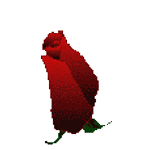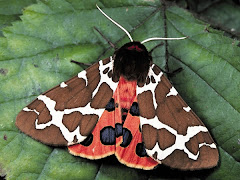
Gordeldieren (Dasypodidae) zijn de enige overlevende
familie uit de gordeldierachtigen (Cingulata).
De familie komt voor in Midden- en Zuid-Amerika.
Het negenbandgordeldier (Dasypus novemcinctus) is de
enige soort die in Noord-Amerika voortkomt, in het
zuidoosten van de Verenigde Staten.
Er zijn 21 levende soorten in acht geslachten (zie lijst).
De kleinste soort, de gordelmol (Chlamyphorus truncatus)
weegt minder dan 100 gram, terwijl de grootste soort,
het reuzengordeldier (Priodontes maximus) meer dan
60 kilogram kan worden. Alle soorten bezitten
een pantser, bestaande uit verbeende huidschilden.
Het zijn allen insectivoren. De meeste soorten eten
ook ander voedsel, als kleine gewervelden, eieren,
paddenstoelen en vruchten.
Gordeldieren spelen ook een belangrijke rol in de
wetenschap. Het negenbandige gordeldier heeft een
ongebruikelijk voortplantingssysteem, in die zin dat
het eeneiige vierlingen kan voortbrengen.
Dit betekent dat alle vier de jongen uit één nest
dezelfde genetische informatie met zich meedragen.
Dit komt van pas in onderzoek waarbij vergelijkingen
gemaakt moeten worden tussen constante factoren,
in dit geval bij de genetisch identieke gordeldieren.
Hier hebben zowel medicinale als gedragsonderzoeken baat bij.
Armadillos are small placental mammals, known
for having a leathery armor shell. The Dasypodidae
are the only surviving family in the order Cingulata, part of the superorder Xenarthra along with the anteaters and sloths.
The word armadillo is Spanish for "little armored one".
There are approximately 10 extant genera and around
20 extant species of armadillo, some of which are
distinguished by the number of bands on their armor.
Their average length is about 75 centimeters (30 in),
including tail; the Giant Armadillo grows up to 1.5 m
(5 ft) and weighs 59 kg (130 lbs), while the
Pink Fairy Armadillos are diminutive species with an
overall length of 12–15 cm (4–5 in).
All species are native to the Americas,
where they inhabit a variety of environments.
In the United States, the sole resident armadillo is
the Nine-banded Armadillo (Dasypus novemcinctus),
which is most common in the central southernmost states, particularly Texas. Their range is as far east as
South Carolina and Florida and as far north as Nebraska;
they have been consistently expanding their range
over the last century due to a lack of natural predators
and have been found as far north as Illinois,
Indiana and southern Ontario.
Armadillos are prolific diggers. Many species use their
sharp claws to dig for food, such as grubs, and to dig dens.
The Nine-banded Armadillo prefers to build burrows
in moist soil near the creeks, streams,
and arroyos around which it lives and feeds.
The diet of different armadillo species varies, but consists
mainly of insects, grubs, and other invertebrates.
Some species, however, are almost entirely formicivorous
(feeding mainly on ants).
Armadillos have poor vision. The armor is formed by
plates of dermal bone covered in relatively small,
overlapping epidermal scales called "scutes", composed
of bone with a covering of horn. In most species,
there are rigid shields over the shoulders and hips,
with a number of bands separated by flexible skin
covering the back and flanks.
Additional armor covers the top of the head,
the upper parts of the limbs, and the tail.
The underside of the animal is never armored,
and is simply covered with soft skin and fur.






































3 opmerkingen:
...Sorry maar geef mij het gordeldier maar dat de kinderen in de auto dragen ;-)
Fijne avond , groetjes van Ingrid.
This is the strangest and sweetest animal at the same time..so cute looking..and the way they roll up, forming a ball...so funny! Thanks! Tak!
@ Aputsiaq
I love strange looking and rare animals the best!
and the stranger, the cuter?
Een reactie posten